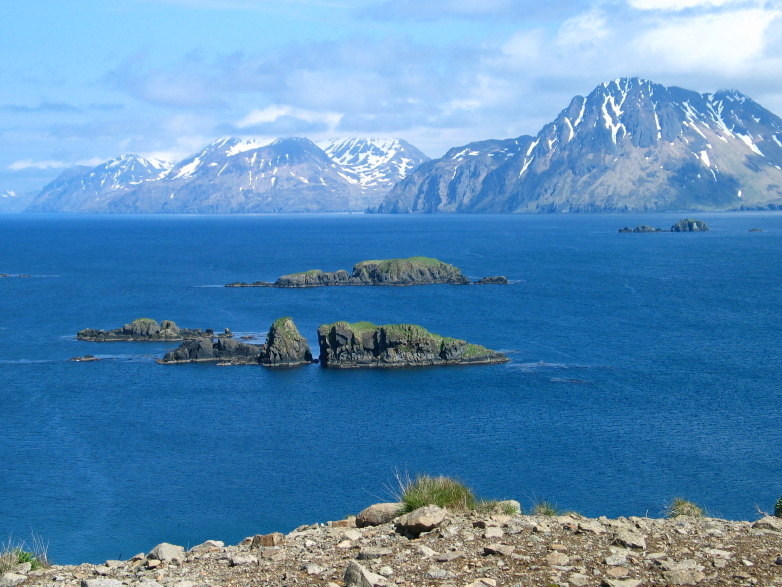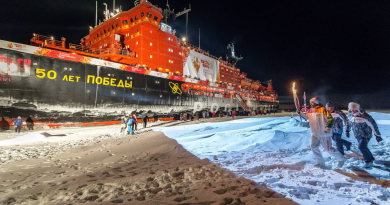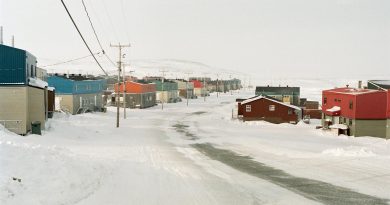Acidification takes toll on Beaufort Sea

With their low temperatures that hold onto the carbon dioxide absorbed from the atmosphere, their shallow depths, their rich supply of marine life and carbon dioxide carried in by currents from elsewhere in the world, and their increasing supply of runoff from melting glaciers and glacier-fed rivers, Alaska’s ocean waters are known to be highly vulnerable to acidification.
Now comes a finding that the Beaufort Sea has already crossed an ominous ocean acidification threshold, and the Chukchi Sea and Bering Sea will follow in the foreseeable future, with water conditions that would be corrosive enough to cause many marine species to struggle.
The findings about the changing marine chemistry come from research by scientists from the National Oceanic and Atmospheric Administration, University of Alaska Fairbanks and the Woods Hole Oceanographic Institution. In a study published in the journalOceanography, they correlate observed calcium measurements in the three seas’ surface waters to a complex model predicting the future of the world’s atmosphere, oceans, sea ice and landscapes.
Threshold crossed
The Beaufort Sea has already reached a state where its surface waters, on average throughout the year, hold too little calcium to fully support shell-building organisms, according to the new findings.
Based on measurements made during research cruises in 2011 and 2012 aboard the U.S. Coast Guard icebreaker Healy, that threshold was crossed in 2001, the scientists found.
The measurement used is aragonite saturation. Aragonite is a form of calcium carbonate. Higher calcium levels make the water more base, while more absorbed carbon dioxide makes it more acidic along the pH scale.
In the Beaufort Sea, surface waters have already reached the point of net aragonite undersaturation — meaning much less calcium than there should be.
“There’s not enough calcium for a shell-bearing organism to build and maintain its shell,” said Jeremy Mathis, an ocean acidification specialist with NOAA and lead author of the new paper.
Mathis, oceanography supervisor at NOAA’s Pacific Marine Environmental Laboratory and director of UAF’s Ocean Acidification Research Center, explains saturation by likening it to salt stirred in a glass. When there is an abundance of salt, not all of it can be dissolved; the water is saturated and some filters to the bottom. But when there is only a small amount of salt, the undersaturated water can dissolve all of it and still have room to take in more.
Beaufort lacks phytoplankton protection
Unlike the Beaufort Sea, the Chukchi and Bering seas have the benefit of phytoplankton blooms, producing tiny plants that take in the water’s carbon dioxide and buffer it against acidification.
The Bering Sea, which in winter holds what is believed to be the most acidic of all the world’s ocean waters, benefits from prolific phytoplankton blooms in spring and fall.
In the Chukchi, phytoplankton have been found blooming under first-year ice, and thinner and sparser ice is believed to be enabling blooms to occur twice a year instead of just once.
The Beaufort lacks such protection, Mathis said. “It doesn’t have the really extreme phytoplankton growth to counteract ocean acidification,” he said.
And in Alaska?
The new study focuses only on surface waters — those used by tiny shell-encrusted pteropods that swim near the surface and are eaten by bigger fish. One of the reasons that acidification worries Alaska fishermen is the threat that it will significantly thin out the supply of pteropods that salmon and other commercial species eat. Already, in the waters off the Pacific Northwest, scientists have found pteropods with underdeveloped and dissolving shells.
Are such problems happening in waters off Alaska? Mathis and his research partners are scheduled to take a research cruise this summer to find out, examining pteropods in the entire Gulf of Alaska.
Outpourings of fresh water from rivers from melting glaciers contribute to the surface-water acidification problem because they dilute the calcium in the oceans.
But acidification, as measured by aragonite undersaturation, is also occurring in the deep waters of Alaska’s relatively shallow oceans, Mathis said. At those depths, acidification threatens shell-bearing creatures like crabs and clams, he said.
Which is worse – acidication at surface waters, or at depth?
“I would say that both are equally bad,” Mathis said.
Related stories from around the North:
Canada: Plastic microbeads- a toxic substance in waterways-from the Great Lakes to the Arctic, Radio Canada International
Greenland: Landmark UCLA study reveals melting of Greenland ice sheet from top to bottom, Blog by Mia Bennett
Iceland: Acid Arctic Ocean and Russell Brand?, by Deutsche Welle’s Iceblogger
Norway: Emissions speeding up Arctic Ocean acidification, Alaska Dispatch News
Russia: Arctic methane: time bomb or “boogeyman”?, Analysis from Deutsche Welle’s Iceblogger
United States: Permafrost ‘carbon bomb’ unlikely, but worries over northern thaw persist, Alaska Dispatch News



